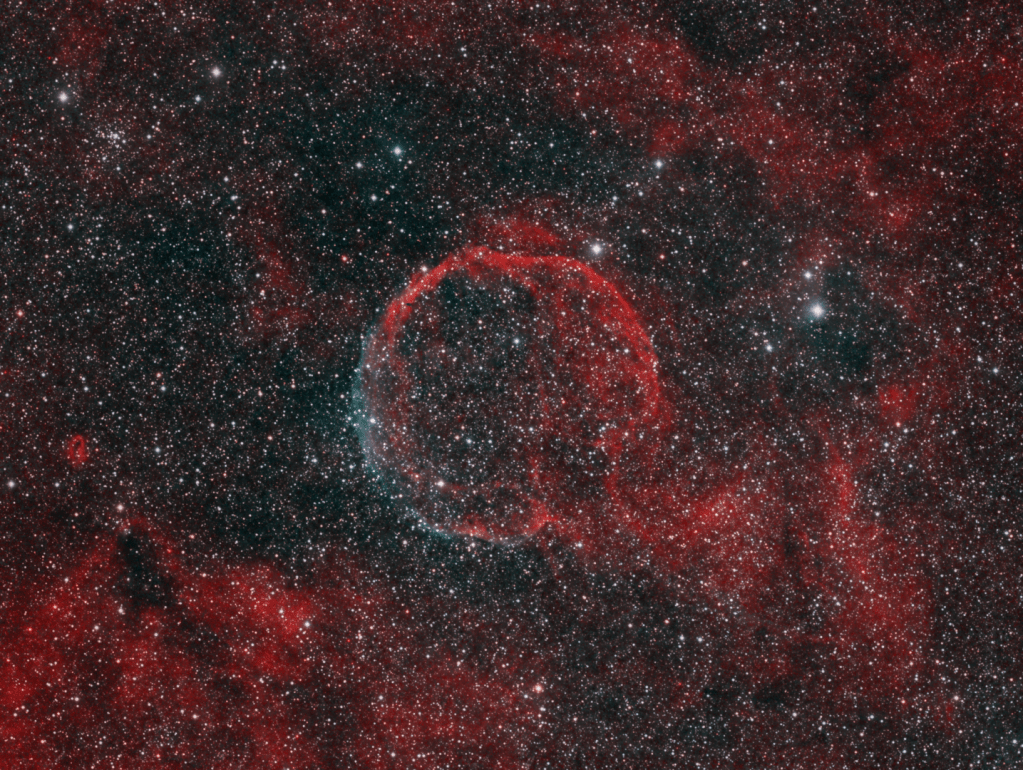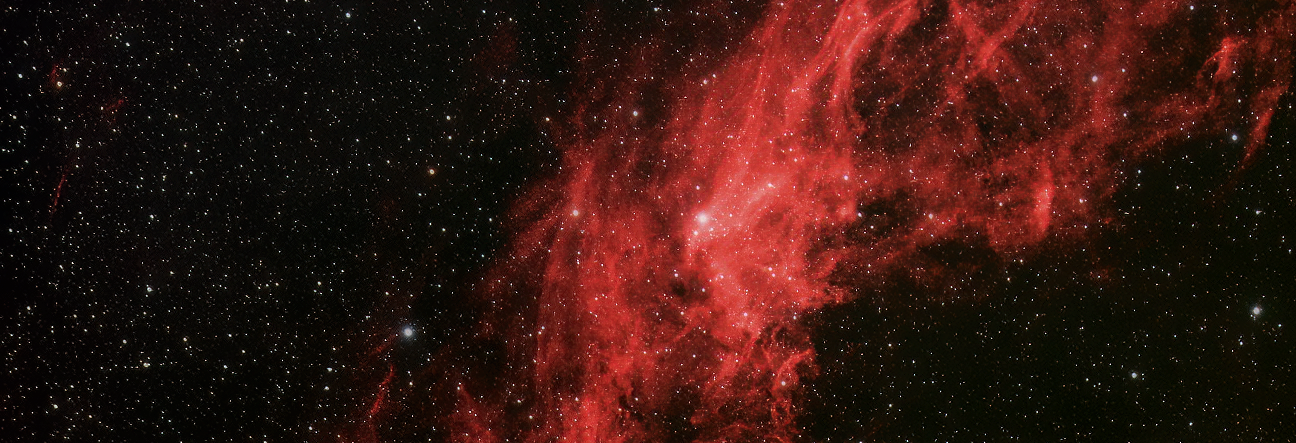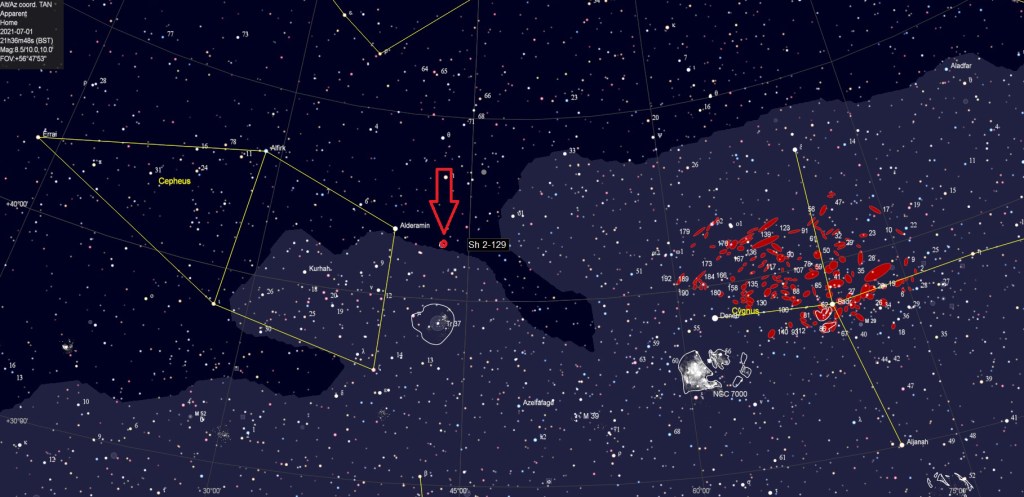
Originally thought to be a planetary nebula, Abell included this object in his catalogue as Abell-85 but later in 1971 it was revised as a supernova remnant (SNR) and renamed CTB-1, thus also denoting it as a radio source. The overall structure is a circular shell with a conspicuous rupture towards the north (bottom right of image). The main red Ha-shell is composed of multiple interlocking filament limbs, with a blue / green OIII arc along one side (see main image above).
I experimented extensively processing the data because of its overall complexity and is an interesting object, which is therfore also presented below as greyscale Ha-wavelength only and starless versions. The main Ha and OIII data is shot at long 1,800 second exposures, which together with RGB adds up to a whopping 29 hours of integration time. However, CTB-1 is an extremely faint object, which probably still requires considerably more time – I’ve seen somebody else’s 61-hour integration which they described as “not enough” and despite the quality of their image I’d probably have to agree.


CTB-1 is a very exciting object, which might have been what Douglas Adams had in mind when creating Milliways or The Restaurant At The End Of The Universe in the Hitchhiker’s Guide, from which such spectacular events could be ordered to view with your meal!
| IMAGING DETAILS | |
| Object | CTB-1 (Abell-85) |
| Constellation | Cassiopeia |
| Distance | 10,000 light-years |
| Size | 35 arcminutes ~ 100 light-years |
| Apparent Magnitude | – |
| Scope | Takahashi FSQ 106 FL 530mm f/5 + Moonlight Nightcrawler focuser |
| Mount | Paramount MyT |
| Guiding | Yes |
| Camera | QSI 683-WSG8 KAF-8300 full frame CCD sensor 5.4nm pixels |
| FOV 1.94o x 1.46o Resolution 2.1”/pix. Image array 3326 x 2,507 pix | |
| Processing | Deep Sky Stacker, PixInsight v1.8.8-8, Photoshop CS3 |
| Image Location & Orientation | Centre – RA 23:59:19.402 DEC +62:25:39.406 North = bottom right |
| Exposures | 29 Ha & 20 OIII x 1,800 secs @ -15C 18 R 17 G 19 B x 300 secs Total Integration Time: 29hr |
| Calibration | 48 x 1,800 secs Darks* x47 Bias & x16 HaOIII +LRGB Flats *RGB scaled to 300sec |
| Location & Darkness | Deep Sky West – amateur hosting facility near Rowe, New Mexico – USA SQM Typically >= 21.7 |
| Date & Time | Q3 2020 |


